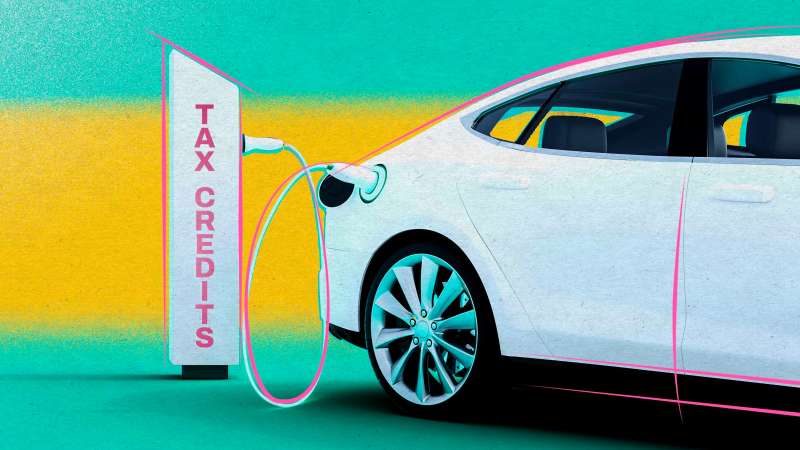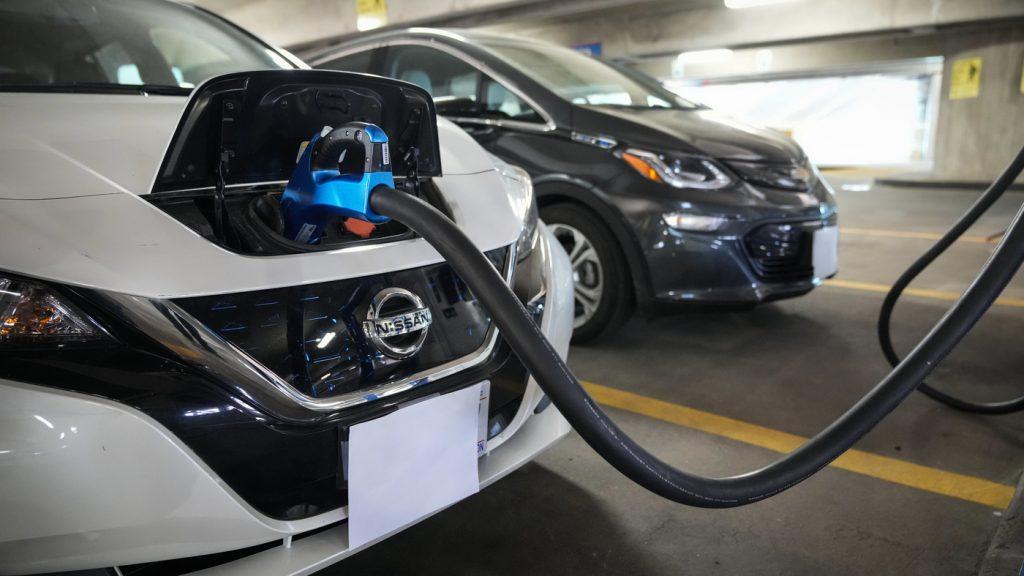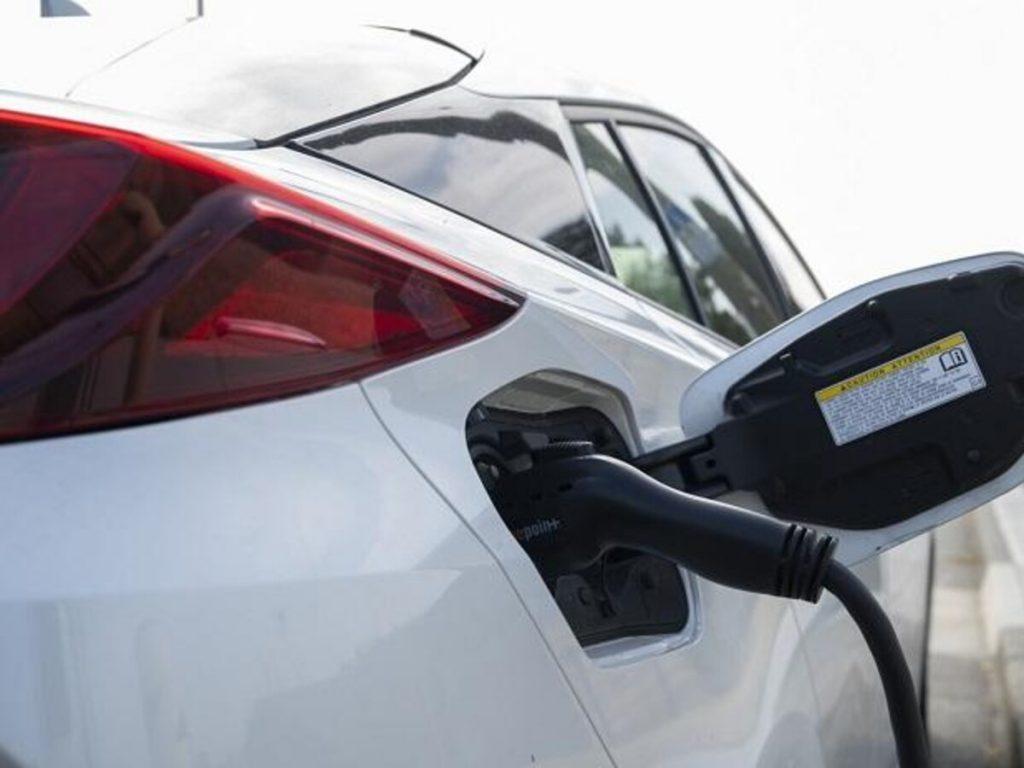Tax Incentives and Subsidies for Electric Vehicles
By Sebastian Orellana
Updated Feb 17, 2024

Are you wondering how governments encourage use of electric vehicles (EVs) through fiscal measures? This article explores the role of tax incentives and subsidies in promoting electric vehicle adoption. We'll begin with what tax incentives and subsidies are and discuss their impact and importance. We then delve into how these fiscal policies promote electric vehicles, including various available types. The article provides examples of direct and indirect subsidies worldwide and explains the process of availing of these benefits.
Table of Contents
We will also touch upon the controversies and debates surrounding these incentives. Finally, we tackle the future, looking at proposed changes and the potential impact of these fiscal measures on the EV market. Understanding these factors can be helpful whether you're an EV manufacturer, a potential buyer, or simply someone interested in the economics and policies of the green revolution.
READ: Which Motor Is The Best For An Electric Car?
Understanding Tax Incentives and Subsidies

Tax incentives and subsidies are powerful tools that governments and regulatory bodies employ globally to influence economic activity, control the distribution of resources, and instigate balanced regional development. These instruments impact both businesses and consumers by stimulating investments or encouraging certain behaviors.
Definition of Tax Incentives
The term "tax incentives" encompasses a range of government measures to decrease the financial burdens of businesses and individuals and encourage economic growth. Essentially, these are tax deductions, exemptions, or credits granted to specific categories of taxpayers to motivate them to carry out particular activities considered desirable.
For instance, businesses might receive tax credits if they invest in research and development projects, sustainable technologies or employ a significant number of people. Individually, tax incentives might be offered to citizens who invest in retirement funds, purchase energy-efficient appliances or make charitable donations.
Being the flip side of taxes, which are compulsory contributions to state revenue, tax incentives play an instrumental role in shaping a country's economic and social policy. They can profoundly influence the allocation of resources, encourage investments in particular sectors, stimulate economic development, and even assist in achieving social goals such as reducing unemployment or poverty levels.
Definition of Subsidies
While tax incentives aim to encourage certain activities by lowering the tax burden, subsidies are direct payments or financial aids that governments provide to businesses or individuals, often in forms of a grant or a loan at an interest rate lower than the market rate. The purpose of subsidies is to reduce the cost of production or the price of goods or services in certain sectors, making them accessible and affordable to the general public.
Subsidies typically target industries that are strategic for a country's economy, have strong growth potential, or are threatened by international competition. They are also provided to support environmental policies, social welfare programs and many other areas where market forces alone may not lead to an optimal outcome.
Impact and Importance of Tax Incentives and Subsidies
Tax incentives and subsidies are crucial in shaping the economic landscape and influencing the behavior of businesses and individuals. They can stimulate investment, promote economic growth, encourage research, development and innovation, and foster job creation.
In many cases, tax incentives are targeted at certain regions to help boost regional development or at specific sectors a government aims to strengthen. By reducing tax liabilities, they can make investments more attractive, promote innovation, create new jobs, and increase overall spending.
On the other hand, subsidies are often used to protect domestic industries from foreign competition, lower the cost of essential goods and services, or promote behaviors that have a broader societal benefit. While the impact of these measures can vary depending on how they are implemented, both are essential tools for governments when striving to achieve national objectives, stimulate economic activity, and ensuring social welfare.
Relationship between Tax Incentives, Subsidies, and Electric Vehicles

The relationship between tax incentives, subsidies, and electric vehicles is intricate and instrumental in determining the uptake of electric vehicles globally. Governments are increasingly adopting diverse measures to lessen the upfront cost of electric cars making them attractive to potential buyers. These measures include financial incentives like subsidies, grants, tax rebates, and exemptions. All these policy mechanisms, specifically tax incentives, and subsidies, play a significant role in transforming and promoting the electric vehicles market.
To understand this relationship deeply, we delve into the role these measures play in promoting electric vehicles and how they influence the affordability of these futuristic cars.
Role of Tax Incentives and Subsidies in Promoting Electric Vehicles
Tax incentives and subsidies are critical policy tools governments leverage to promote the adoption of electric vehicles. Their effectiveness lies in their power to lessen the economic burden linked to the purchase of electric vehicles compared to conventional petrol/diesel cars.
Tax incentives play one of the roles in helping close the cost gap between electric and internal combustion cars. By giving tax breaks or rebates, the government lessens the financial hit for buyers making the cost more bearable. As a result, more people are incentivized to purchase electric vehicles, increasing demand, and consequently, wider adoption.
Subsidies, on the other hand, outrightly lower the electric vehicle price tag. This effect means that electric vehicles – typically more expensive due to the high cost of battery technology – become more affordable to the average consumer. As a result, more people can afford electric vehicles, leading to an increase in market volume.
Moreover, tax incentives and subsidies don't only stimulate the demand side of electric vehicles; they also influence the supply side. When successfully implemented, manufacturers are more motivated to invest in producing electric vehicles, knowing that the environment is conducive and the consumer base is growing.
How Tax Incentives and Subsidies make Electric Vehicles Affordable
As aforementioned, tax incentives and subsidies are potent tactics in combating the high upfront cost of electric vehicles, thus making them more affordable for the masses. But how exactly do these two mechanisms translate into affordability?
Firstly, tax incentives can be perceived as a 'discount' for electric vehicle buyers. Intended to encourage the purchase of electric vehicles, they work by reducing the tax liability for individuals or businesses that opt to purchase or lease an EV. In some regions, these tax credits are substantial enough to drop the car's price below that of similar internal combustion engine vehicles.
Subsidies work differently. They are essentially government financial contributions that lower the retail price of electric vehicles. In most instances, the subsidy is applied at the point of sale, instantly reducing the initial purchase cost. This scenario means the buyer pays less than the market value, making the electric vehicle an attractive option and ultimately driving up sales.
By making electric cars more affordable, tax incentives and subsidies play an essential role in promoting the widespread adoption of electric vehicles. These financial measures make EVs attainable and appealing to the average buyer – a crucial step towards tackling climate change, reducing energy consumption, and promoting sustainable growth.
READ: Electric Truck Conversion Kit
Different Types of Tax Incentives for Electric Vehicles
Electric vehicles have gained popularity mainly because of different governments' tax incentives. The primary aim is to encourage using cleaner and renewable energy sources and reduce dependence on fossil fuels. This is often considered a significant step towards a more sustainable and environmentally friendly future.
Federal Tax Credits
At the federal level, the United States government supports purchasing electric cars through a tax credit system. The Qualified Plug-In Electric Drive Motor Vehicle Credit can range from $2,500 to $7,500 per new electric vehicle purchased in the U.S. However, the tax credit amount depends on the battery capacity used to power the vehicle.
For instance, electric vehicles with at least 5 kWh of rechargeable battery capacity are eligible for a base tax credit of $2,500. The credit then increases by $417 for electric vehicles with a battery capacity of 5 kWh to 17 kWh. Electric vehicles with a battery capacity greater than 17 kWh are eligible for the maximum tax credit of $7,500.
It's also worth noting that this tax credit isn't available to everyone forever. Once a manufacturer sells 200,000 eligible electric vehicles, the tax credit begins to phase out for that manufacturer's vehicles.
State and Local Tax Incentives
In addition to federal tax credits, a variety of state and local incentives are also available to electric vehicle owners. These incentives can include additional tax credits, vehicle or infrastructure rebates, vehicle registration fee reductions, loans, and grants.
The incentives vary greatly by state. For example, California offers rebates for the purchase or lease of new, eligible zero-emission or plug-in hybrid light-duty vehicles, while Maryland provides an excise tax credit for the purchase of a qualified plug-in electric vehicle.
Examples of Subsidies for Electric Vehicles

Subsidies for electric cars are incentives governments or organizations offer to reduce the purchase and operational cost of electric vehicles. There are two types: direct and indirect subsidies.
Direct Subsidies
A direct subsidy is the most direct form of financial assistance that a government can provide to buyers of electric cars. Usually, these direct subsidies can take the form of a lump-sum payment or a deduction from the final price of the vehicle, making it more affordable for purchasers.
An example of direct subsidy is the United Kingdom's Plug-in Car Grant, which reduces the cost of brand-new electric vehicles by providing a grant of up to £3,500.
Indirect Subsidies
Indirect subsidies are benefits indirectly related to the electric vehicle purchase; they're not direct cash transfers or discounts. These may include reduced charging tariffs during off-peak hours, free parking in city centers, and access to bus or fast lanes in heavy traffic.
Countries like Norway have exempted electric cars from road tolls and fees on ferries.
Examples from Different Countries
Many countries offer a mix of both direct and indirect subsidies. In Germany, electric car buyers can enjoy benefits up to €9,000 as part of the ‘Environmental Bonus,’ with half of this bonus supported by the federal government, and the rest backed by automakers. In China, national subsidies and local incentives stack up to approximately ¥25,000 ($3,780) per electric vehicle.
The incentives vary greatly from country to country, as each government devises its unique strategies to promote electric vehicles, contributing to a greener future.
Procedure to Avail Tax Incentives and Subsidies for Electric Vehicles
The environmental and financial benefits of electric vehicles (EVs) are rapidly increasing global adoption. This growth is further facilitated by attractive tax incentives and subsidies offered by governments, regional authorities and certain organizations to make EVs more affordable and encourage their use. This article informs readers about the process to avail of these lucrative offers.
Eligibility Criteria
The first step in claiming tax benefits and subsidies for EVs is to understand the eligibility criteria. These criteria can vary based on geography and the specific program. However, some common factors often considered include the type of vehicle, its price, and the consumer's income level.
The type of vehicle refers to whether it is fully electric or a plug-in hybrid. Some programs offer subsidies and tax incentives only for fully electric vehicles, while others also extend these benefits to plug-in hybrids. Consequently, understanding the type of vehicle eligible under your jurisdiction's program is crucial to avoid disappointment.
The price of the vehicle is another familiar metric. Some jurisdictions set a cap on the price of the vehicle for which incentives can be claimed. For instance, vehicles above a certain price may be considered luxury and might be exempted from incentives.
Finally, in some cases, the level of the consumer's income may be considered. This is more common in tax incentive programs. Here, the objective is often to encourage lower-income households to adopt EVs. Therefore, the benefits could be higher for those who earn less.
Remembering that each program has its specific principles and exceptions is essential. Understanding these can significantly ease the application process and increase the likelihood of acquiring these benefits.
Application Process
Once the eligibility criteria are clear, the next step is the application process. In most cases, the application process is straightforward. It usually involves purchasing an eligible EV and then filing the necessary tax forms or applications.
Depending on the jurisdiction and the specific program, the timing of when to file these forms might vary. In some cases, the application can be filed when filing annual income tax, while in others, it might need to be filed at the time of the vehicle purchase.
Furthermore, some programs require that the benefits are applied towards the price of the vehicle at the time of purchase. This often involves the dealer or manufacturer factoring in the incentive in the invoice itself.
The Role of Manufacturers and Dealers
Manufacturers and dealers also play a critical role in claiming tax incentives and subsidies. In many cases, they partner with the respective government departments to make this process as comfortable as possible for you, the consumer. As mentioned earlier, this can involve factoring in the incentives directly into the price. Dealers also often take care of any paperwork or applications, further easing the process for the consumer.
It is also common for manufacturers and dealers to have detailed knowledge about the specific eligibility criteria and the application process. Their advice can be invaluable to ensure a straightforward process to avail these cost savings.
Remember, however, that while these incentives are attractive, they are not the only factor to consider when purchasing an EV. Ensure to consider other factors such as the vehicle's range, charging infrastructure in your area, and the overall cost of ownership. Make an informed decision and enjoy the benefits of driving an environmentally sustainable vehicle.
Controversy and Discussion Surrounding Tax Incentives and Subsidies

Tax incentives and subsidies have been the subject of ongoing controversy and discussion on an international scale. These financial aids are commonly utilized as public policy tools to encourage investments and foster economic and social development. However, they have been criticized for their effectiveness, fairness, and implications for the business sector and environment.
Economic Impact of Tax Incentives and Subsidies
On one side of the debate, tax incentives and subsidies are vital to economic development. They are financial tools governments leverage to promote particular economic activities or sectors, providing companies with a competitive edge against international competition. These incentives can take the form of tax reductions, exemptions, or credits that encourage companies to invest in research, development, or human capital or to set up businesses in certain regions. On the other hand, subsidies serve as direct cash payments, discounts, or grants that help reduce the risks associated with the start-up of new business ventures or the adoption of innovative technology.
However, critics argue that such incentives could distort market forces, lead to misallocation of resources, and exacerbate income inequality. The selective nature of tax breaks and subsidies often benefits large corporations the most while small businesses, lacking the political influence and scale to benefit from such incentives, are left at a disadvantage. Furthermore, the lack of clear guidelines and proper mechanisms for assessing the success of these incentives contributes to skepticism about their effectiveness.
Effect on the Traditional Automotive Market
The automotive market is one sector that has seen substantial change as a result of tax incentives and subsidies, particularly with the advent of electric vehicles (EVs). Governments worldwide have attempted to speed the adoption of EVs through significant tax incentives and subsidies, aiming to reduce the reliance on fossil fuels and curb greenhouse gas emissions.
However, this preferential treatment for EVs has been met with criticism. Opponents argue that these incentives artificially distort the market, giving EVs a competitive advantage over traditional petrol or diesel cars. They contend that it could lead to a premature end of internal combustion engine vehicles, resulting in job losses in traditional car manufacturing industries and unjustly burdening consumers who cannot afford or do not wish to switch to EVs.
Environmental Implications
Considering the environment, the tax incentives and subsidies issue becomes even more complex. While some support them on the grounds of fostering renewable energy and green technology, others spotlight the environmental drawbacks associated with their use.
For instance, tax incentives for fossil fuel industries have been scrutinized for perpetuating dependence on non-renewable energy sources, exacerbating climate change. On the other hand, subsidies for renewable energy have also been criticized as they can lead to overproduction and inefficiency in certain situations. Furthermore, the debate extends to agricultural subsidies, which incentivize environment-destructing farming practices.
In this way, tax incentives and subsidies tie into a larger conversation surrounding economic growth, fair competition, and environmental sustainability, catapulting the issue to the forefront of public policy debate.
The Future of Tax Incentives and Subsidies for Electric Vehicles
The rise in public interest in electric vehicles (EV) has begun breaking the traditional automaker model. Demand for EVs is driven by increasing consumer awareness towards environmental sustainability, improving vehicle technology, and generous government tax incentives and subsidies. Governments worldwide are playing a significant role in accelerating EV adoption rates through their policies. This article discusses the future of these tax incentives and grants and the potential implications for the EV market.
READ: How To Build Your EV Into A High Performance Electric Car?
Proposed Changes and Reforms
Government strategies to stimulate the EV market continually evolve, reflecting both the maturing market and changing policy objectives. Recent proposals suggest more targeted and efficient forms of financial support. In some countries, policymakers are considering replacing upfront purchase incentives with a system of road usage charging, which could include lower rates for EVs. Infrastructure incentives focusing on the development and accessibility of charging infrastructures are also being prioritized.
Another significant trend is the call for progressive reduction and eventual phasing out of direct subsidies. This stems from emerging challenges like fiscal constraints and equity considerations. It's argued that the benefits of subsidies, at present, disproportionately favor wealthier citizens who can afford to buy EVs. Therefore, a redirection of these benefits towards increasing the affordability for the general public is likely in the future.
However, these reforms would need to be designed carefully to prevent a negative impact on the EV market. Policymakers would need to balance these changes while still keeping EVs an attractive option for consumers.
Impact on Electric Vehicle Market Growth
The EV incentives and subsidies changes would undeniably affect the market's growth. The electric vehicle market relies heavily on government policies and subsidies for growth. A reduction or complete removal of these incentives could decrease sales, at least temporarily.
On the other hand, introducing targeted and efficient incentives in areas like infrastructure development could pave the way for industry expansion by addressing key issues such as the availability of charging stations and reducing 'range anxiety'.
The overall impact on the EV market growth will ultimately depend on the nature and implementation of these reforms. Appropriate design, timing, and communication of these changes would mitigate negative impacts and maintain market confidence.
Evolution of Incentives and Subsidies with Advancing Technology
Technological progress is crucial to the evolution of incentives and subsidies for electric vehicles. The declining costs of lithium-ion batteries, coupled with improvements in energy density and longevity, are expected to make EVs cost-competitive with internal combustion engine vehicles without subsidies.
As technology advances and EVs become more affordable, policy focus may shift from direct subsidies to research and development incentives to catalyze further advancements in EV technology.
In the long term, these incentives and subsidies should evolve along with market maturity, technological advancement, and buyers' and manufacturers' changing needs and capabilities. They should progressively transition from promoting initial market growth to supporting sustainable development and innovation — strongly emphasizing establishing a robust and self-sustaining electric vehicle market.
